Top speed 462 km/h Length 14 m Engine type Wright R-1820 Cyclone Manufacturer Grumman | Wingspan 22 m Introduced 1958 First flight December 17, 1956 | |
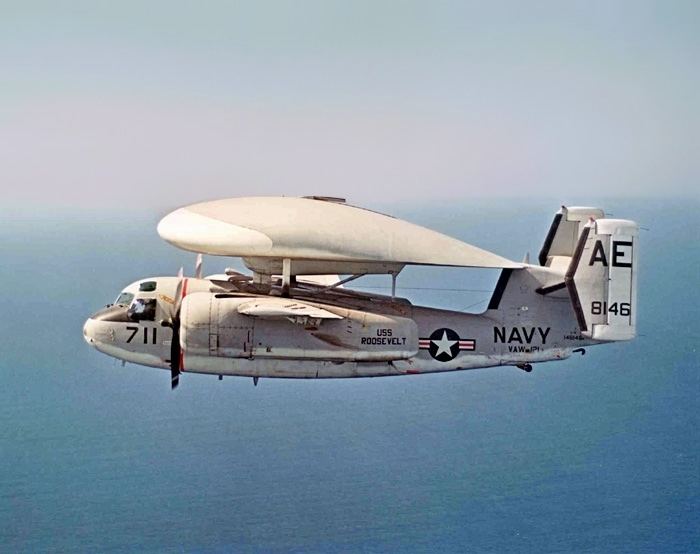 | ||
F 0623 grumman e 1 tracer accident video
The Grumman E-1 Tracer was the first purpose built airborne early warning aircraft used by the United States Navy. It was a derivative of the Grumman C-1 Trader and first entered service in 1958. It was replaced by the more modern Grumman E-2 Hawkeye by the 1970s.
Contents
- F 0623 grumman e 1 tracer accident video
- Design and development
- Radar
- Operational history
- Variants
- Operators
- Aircraft on Display
- Specifications
- References
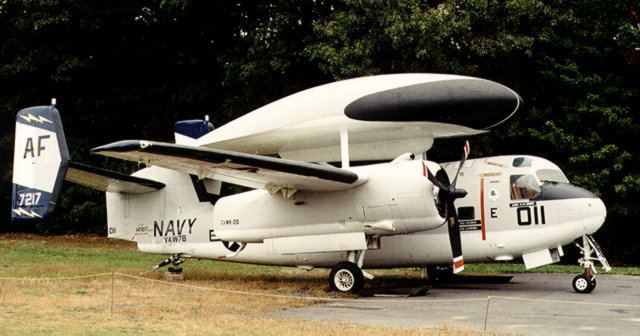
Design and development
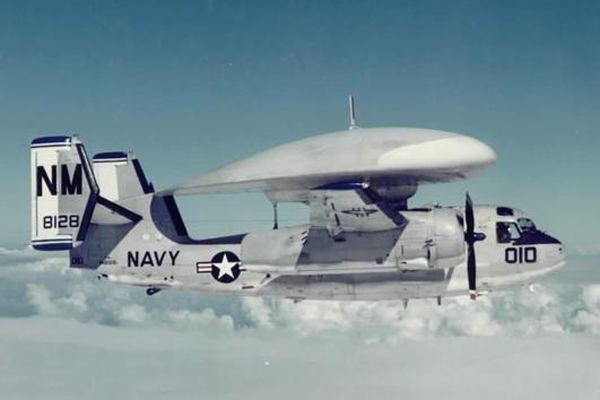
The E-1 was designated WF under the 1922 United States Navy aircraft designation system; the designation earned it the nickname "Willy Fudd". Since the S-2 Tracker carrier-based antisubmarine aircraft from which the Tracer was derived known as S2F under the old system, that aircraft was nicknamed "Stoof"; the WF/E-1 with its distinctive radome gained the nickname "Stoof with a Roof." The E-1 featured folding wings for compact storage aboard aircraft carriers. Unlike the S-2 and C-1 in which the wings folded upwards, the radome atop the fuselage necessitated the E-1 to fold its wings along the sides of the fuselage.
Radar
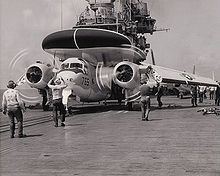
The Tracer was fitted with the Hazeltine AN/APS-82 in its radome and fuselage. The radar featured an Airborne Moving Target Indicator (AMTI), which compares the video of one pulse time to the next in reflected radar energy to distinguish a flying aircraft from the clutter produced by wave action at the ocean's surface. The energy reflected from an aircraft changes position rapidly compared to the energy reflected from the surrounding sea. Separating a moving object from stationary background is accomplished by suitable hardware.
Operational history
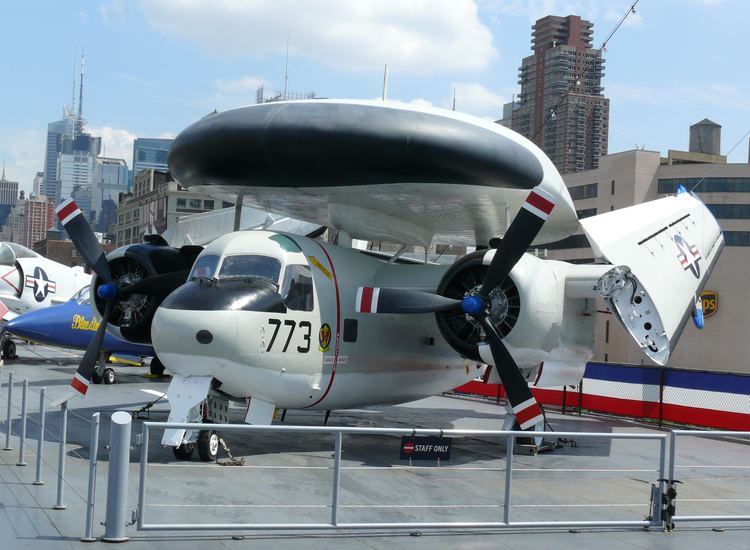
As one of the first carrier based early warning aircraft, the E-1 Tracer served from 1958 to 1977, although considered only an interim type, being replaced by the Grumman E-2 Hawkeye in the mid-1960s. During the early years of the Vietnam War, E-1s saw extensive service, providing combat air patrol (CAP) fighters with target vectors, and controlling Alpha strikes over North Vietnam. With a radius of 250–300 miles, the E-1B served as an early warning to strike aircraft, of enemy MiG's activity.
By May 1973, most E-1Bs were retired, with only four VAW-121 Tracers based at NAS Norfolk, Virginia, still in service. These aircraft were soon retired during mid-summer 1977 following a final cruise on board the USS Franklin D. Roosevelt (CV-42) and were ferried to the Davis-Monthan storage facility. The E-1B Tracer was struck from the inventory by 1977.
Variants
Operators
Aircraft on Display
There are five E-1 Tracers preserved at museums throughout the United States:
Another 11 E-1 Tracers are in storage at United Aeronautical, an aircraft surplus yard located just outside Davis–Monthan Air Force Base in Tucson, Arizona. At least one of those aircraft (E-1B, BuNo 148922) was sold to a private collector in 2011 with the intent to restore to fly, although no updates on the project have been posted since 2012.
Specifications
Data from Standard Aircraft Characteristics
General characteristics
Performance
